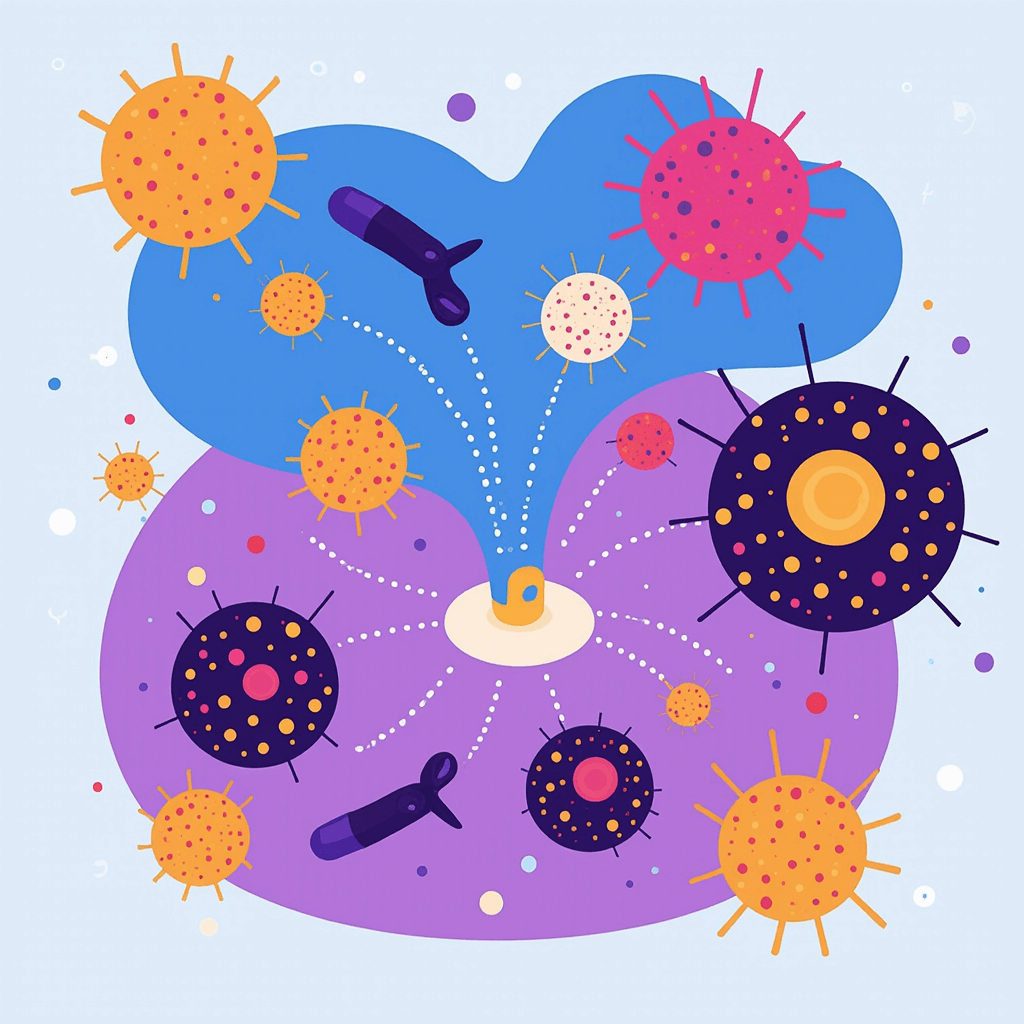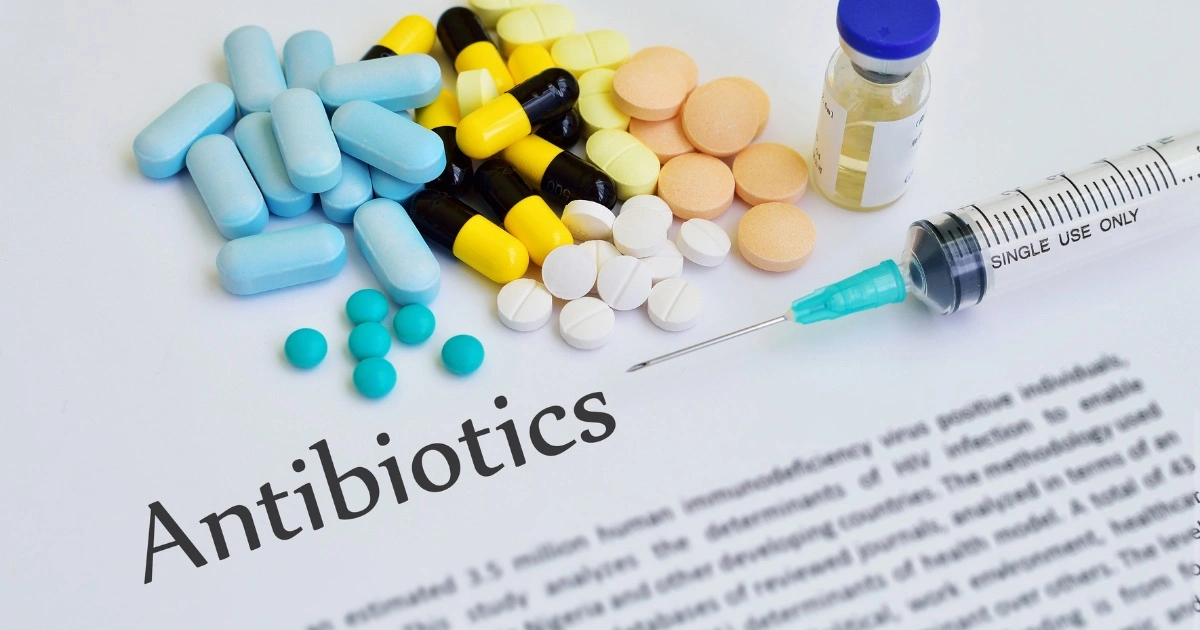Table of Contents
Antibiotics have revolutionized modern medicine—turning once-deadly infections into treatable conditions and saving millions of lives worldwide. But this powerful tool comes with a warning. When misused or overused, antibiotics can trigger a silent crisis: antibiotic resistance. This growing threat makes infections harder—and sometimes impossible—to treat. Are we using antibiotics wisely? In this article, discover the real benefits, the hidden dangers, and how small, responsible choices can protect both your health and the future of medicine.
Key Takeaways
- These drugs are essential for treating bacterial infections, saving lives from diseases like pneumonia and sepsis.
- Misuse and overuse can lead to resistance, making infections harder to treat.
- They can upset the balance of healthy bacteria in the gut, causing digestive issues and weakened immunity.
- These medications should only treat bacterial infections and are ineffective against viral illnesses like the flu and common cold.
- New approaches, including phage therapy and nanotechnology, are being developed to combat resistant infections effectively.
How does an antibiotic work?
Medications targeting bacterial infections work by killing bacteria or stopping their growth. Discovered in 1928 by Alexander Fleming with penicillin, these drugs have become one of the most significant advancements in healthcare. They treat diseases such as pneumonia, urinary tract infections, strep throat, and skin infections.
Mechanisms of action
Antibiotics work by targeting specific bacterial structures:
- Cell wall inhibitors (e.g., penicillin, cephalosporins) block the formation of bacterial cell walls, causing the cells to break apart.
- Protein synthesis inhibitors (e.g., tetracyclines, macrolides) prevent bacteria from producing essential proteins.
- DNA/RNA synthesis inhibitors (e.g., quinolones) stop bacteria from replicating their genetic material.
- Metabolic inhibitors (e.g., sulfonamides) interfere with bacterial metabolism.

These mechanisms allow these drugs to effectively combat bacterial infections without harming human cells. However, their overuse can lead to antibiotic resistance, a growing global health threat .
What are the benefits of having a life insurance policy?
When used appropriately, these traitements provide significant health benefits.
Treating Life-Threatening Infections
Before these treatments became available, bacterial infections like tuberculosis, pneumonia, and sepsis were often fatal. Their introduction has drastically reduced mortality rates from such infections. For example, untreated bacterial pneumonia once had a high death rate, but modern treatments significantly lower this risk when given promptly.
Preventing Post-Surgical Infections
These drugs play a crucial role in preventing infections following surgery and are often used prophylactically for patients undergoing invasive procedures. Without them, surgeries such as organ transplants, joint replacements, and even routine appendectomies would carry significantly higher risks.
Supporting Chemotherapy Patients
Patients undergoing chemotherapy have weakened immune systems, making them susceptible to infections. these drugs help these patients fight infections during treatment, enabling them to complete aggressive therapies that might otherwise be interrupted .
Controlling Epidemics
These medications have been essential in controlling bacterial outbreaks like cholera and typhoid fever. In the past, such diseases could spread rapidly and cause widespread ilness, but these treatments have greatly mitigated these risks.
What is the overuse and misuse of antibiotics associated with?
Despite their benefits, these drugs can pose significant risks when misused. The most concerning danger is antibiotic resistance, a phenomenon that occurs when bacteria evolve and become immune to the effects of the drugs designed to kill them.
The global Threat of Antibiotic Resistance
Antibiotic resistance is one of the biggest threats to global health today, according to the World Health Organization (WHO) . It occurs when bacteria mutate in response to antibiotic exposure. The overuse and misuse of these drugs, particularly for viral infections (like the common cold or flu), accelerate this process. Superbugs—bacteria resistant to multiple antibiotics—have emerged, including MRSA (Methicillin-resistant Staphylococcus aureus) and drug-resistant E. coli.
The CDC estimates that at least 2.8 million drug-resistant infections occur in the U.S. each year, resulting in 35,000 deaths. If left unchecked, resistance could lead to a future where minor infections or surgeries once again become life-threatening.
Disruption of the Gut Microbiome
These drugs don’t just kill harmful bacteria; they can also disrupt the balance of beneficial bacteria in the gut, leading to dysbiosis. The gut microbiome plays a crucial role in digestion, immunity, and overall health.
Consequences of microbiome disruption include:
- Diarrhea and gastrointestinal problems.
- Increased susceptibility to infections such as Clostridium difficile (C. diff), which causes severe diarrhea and can be life-threatening.
- Weakened immunity, making individuals more vulnerable to other infections.
Allergic Reactions and Side Effects
Some people may experience allergic reactions to antibiotics, particularly to drugs like penicillin and sulfonamides. These reactions can range from mild rashes to severe conditions like anaphylaxis, which can be life-threatening. Other side effects include nausea, vomiting, and yeast infections .
When Should you Use Antibiotics?
To protect your health and reduce the risk of resistance, it’s essential to understand when these drugs are necessary.
Antibiotics for BacterialInfections
These medications should only be used for bacterial infections. Common bacterial infections include:
- Strep throat
- Bacterial pneumonia
- Urinary tract infections (UTIs)
- Bacterial skin infections
- Bacterial sinus infections (in some cases)
Your doctor may prescribe these medications after confirming that the infection is caused by bacteria and not a virus.
Not Effective for Viral Infections
Antibiotics do not work on viral infections such as:
- The common cold
- Influenza (flu)
- Bronchitis
- Viral sore throats
Taking these drugs for viral infections does more harm than good by increasing the risk of resistance and unnecessary side effects .
Always Complete the Course
If prescribed antibiotics, it’s crucial to complete the full course of treatment, even if you feel better before finishing the medication. Stopping early allows bacteria to survive and potentially become resistant .
How to take antibiotics safely?

Follow your Doctor’s Instructions
Take medications exactly as prescribed. Avoid self-diagnosing and never use leftover drugs or someone else’s prescription. If you’re unsure whether you need them, ask your healthcare provider.
Prevent Infections
The best way to reduce antibiotic use is to prevent infections in the first place. Practice good hygiene, wash your hands regularly, and stay up to date on vaccines like the flu shot, which can prevent secondary bacterial infections .
Support Antibiotic Stewardship
Support programs that promote antimicrobial stewardship, aiming to improve drug use and reduce the spread of resistance. These initiatives help ensure their effectiveness for future generations.
What is the future of antibiotics?
As antibiotic resistance continues to rise, researchers are exploring new ways to combat bacterial infections.
Phage Therapy
Phage therapy involves using bacteriophages—viruses that specifically target and destroy bacteria. This method is being investigated as an alternative to traditional treatments, particularly for resistant infections.
New Antibiotic Development
Scientists are also working to develop next-generation antibiotics that target bacteria in new ways. Recent breakthroughs in understanding bacterial mechanisms have led to the discovery of promising new drug classes .
Nanotechnology
Nanotechnology is being used to deliver drugs more precisely, reducing side effects and improving the drugs’ effectiveness against resistant bacteria.
Conclusion
Antibiotics are indispensable in modern medicine, but their misuse can lead to catastrophic consequences. By understanding when and how to use antibiotics responsibly, you can help prevent the rise of antibiotic resistance. Always follow your doctor’s advice, complete the full course of treatment, and practice good hygiene to protect yourself and others. Stay informed, and help spread awareness about the importance of antibiotic stewardship.
References
- World Health Organization. Antibiotic Resistance Factsheet. WHO Publications, 2020. https://www.who.int/news-room/fact-sheets/detail/antibiotic-resistance.
- CDC. Antibiotic Resistance Threats in the United States, 2019. CDC Report. https://www.cdc.gov/drugresistance/pdf/threats-report/2019-ar-threats-report-508.pdf
- NIAID. Antimicrobial Resistance: Tackling a Crisis for the Health of the Future. NIAID, 2021.
- Holmes AH, Moore LS, Sundsfjord A, Steinbakk M, Regmi S, Karkey A, Guerin PJ, Piddock LJ. Understanding the mechanisms and drivers of antimicrobial resistance. Lancet. 2016 Jan 9;387(10014):176-87. Epub 2015 Nov 18. PMID: 26603922.
FAQ
- What are antibiotics and how do they work? Antibiotics are medications designed to treat bacterial infections. They work by either killing bacteria or inhibiting their growth. Discovered in 1928, they revolutionized modern medicine, allowing for the treatment of previously deadly diseases like pneumonia and tuberculosis.
- What are the main types of antibiotics and their mechanisms of action? Antibiotics target bacteria through different mechanisms:
- Cell wall inhibitors (e.g., penicillin) break down bacterial cell walls.
- Protein synthesis inhibitors (e.g., tetracyclines) stop essential bacterial protein production.
- DNA/RNA synthesis inhibitors (e.g., quinolones) prevent bacteria from replicating.
- Metabolic inhibitors (e.g., sulfonamides) disrupt bacterial metabolism.
- What are the main benefits of antibiotics? Antibiotics are life-saving when used correctly. They treat serious infections, prevent post-surgical infections, support chemotherapy patients with weakened immune systems, and help control bacterial epidemics.
- What is antibiotic resistance, and why is it a concern? Antibiotic resistance occurs when bacteria adapt and become immune to antibiotics, making infections harder to treat. Misusing antibiotics, especially for viral infections like the flu, accelerates resistance, leading to “superbugs” that resist multiple antibiotics.
- How do antibiotics affect the gut microbiome? Antibiotics can disrupt the balance of beneficial bacteria in the gut, causing digestive issues and weakened immunity. This disruption may lead to side effects like diarrhea, increased vulnerability to infections, and a higher risk of conditions like Clostridium difficile infections.
- When should antibiotics be used? Antibiotics should only be used for bacterial infections, such as strep throat, bacterial pneumonia, or UTIs. They are ineffective against viral infections like the common cold and flu, and using them for these can increase resistance risks.
- Are there any side effects or allergic reactions to antibiotics? Yes, some people may experience side effects like nausea or allergic reactions, especially to drugs like penicillin. Severe reactions can include anaphylaxis, a life-threatening condition.
- Why is it important to complete the full course of antibiotics? Finishing the full course ensures all bacteria are eliminated. Stopping early can allow remaining bacteria to survive and become resistant, making future infections harder to treat.
- How can we use antibiotics safely? Follow your doctor’s instructions, avoid self-prescribing, and never use leftover antibiotics. Prevent infections through good hygiene and vaccinations to reduce the need for antibiotics.
- What are some future alternatives to traditional antibiotics? Researchers are exploring new approaches like phage therapy, which uses viruses to target bacteria, and nanotechnology for precise drug delivery, as well as developing next-generation antibiotics to combat resistant bacteria.

8 thoughts on “Antibiotics: Friend or Foe in Modern Medicine?”